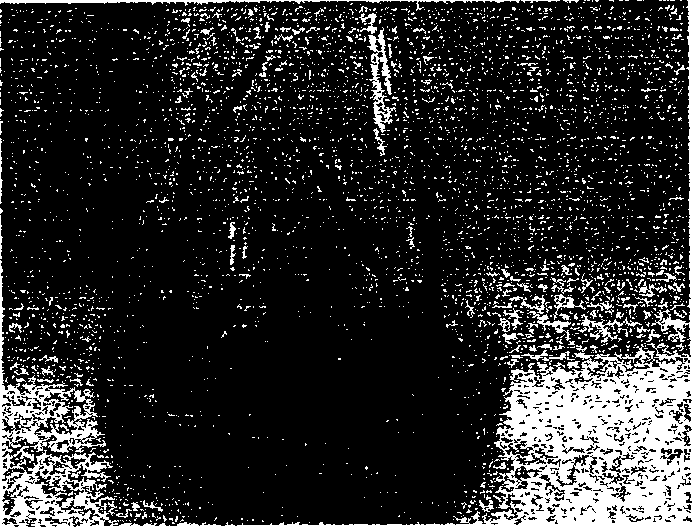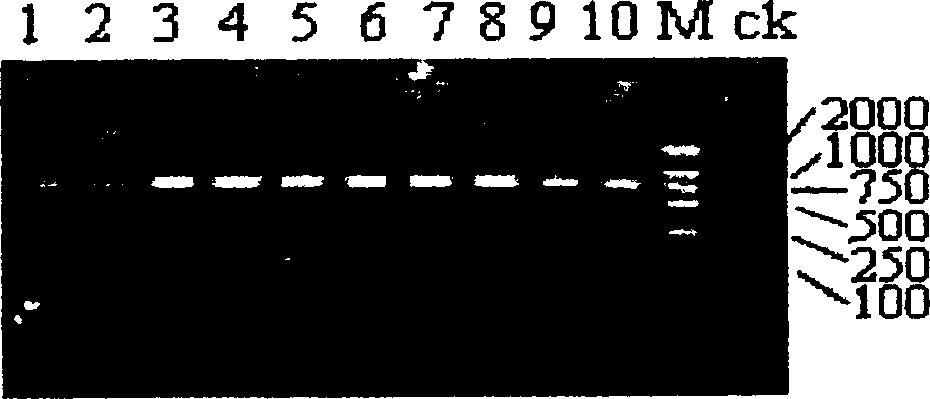Dwarf gene in paddy rice
A technology of dwarf genes and genes, applied in the field of rice genes, can solve the problems of few research reports
- Summary
- Abstract
- Description
- Claims
- Application Information
AI Technical Summary
Problems solved by technology
Method used
Image
Examples
Embodiment 1
[0122] Using the genomic DNA of the rice variety Nipponbare as the template, and based on the nucleic acid sequence published on NCBI, two pairs of primers were designed for PCR amplification. The amplified product was recovered, and 8 μl of the recovered product was ligated with 1 μl of T-vector overnight at 16°C. The ligated product was transformed into competent cells of S. coli, and the recombinants were selected for PCR and enzyme digestion identification.
[0123] Pick the positive recombinants and send them to Boya for sequencing.
Embodiment 2
[0125]The 3-terminal 416bp nucleic acid sequence of the osDw gene was selected, two pairs of primers were synthesized, and Kpn 1 and BamH I and Sac I and Spe I restriction sites were introduced into the primers respectively. Then, using the genomic DNA template, PCR amplification was carried out. The amplification conditions of PCR were as follows: pre-denaturation at 94 °C for 5 min; denaturation at 94 °C for 45 sec, annealing at 55 °C for 1 min, 72 °C for 1 min, 35 cycles; extension at 72 °C for 5 min. The PCR products were recovered and digested with Kpn 1 and BamH I and Sac I and SpeI respectively, and the digested products were recovered. The ds1301 was double digested with Kpn 1 and BamH I, and the digested product was recovered. Take 1 μl T 4 Ligase Buffer, 7 μl Kpn 1 and BamH I double-digested PCR product, 1 μL Kpn 1 and BamH I double enzyme ds1301, 10U T 4 Ligase was used overnight at 16°C, and the ligation product was transformed into competent cells of S. coli. Th...
Embodiment 3
[0128] Preparation of co-culture medium; pick glycerol bacteria stored at -20°C in 1.5ml LB (containing 50μg / ml Kan), and after shaking at 28°C for 32h, pipette 150μl of agricultural straw bacteria solution into 10ml LB (containing 50μg / ml Kan) After culturing at 28°C for 24 hours, centrifuge to collect the cells, suspend the cells with an equal volume of AA liquid medium, and add acetosyringone (AS) to the cells to make the concentration reach 100 μmol / L.
PUM
 Login to View More
Login to View More Abstract
Description
Claims
Application Information
 Login to View More
Login to View More - R&D
- Intellectual Property
- Life Sciences
- Materials
- Tech Scout
- Unparalleled Data Quality
- Higher Quality Content
- 60% Fewer Hallucinations
Browse by: Latest US Patents, China's latest patents, Technical Efficacy Thesaurus, Application Domain, Technology Topic, Popular Technical Reports.
© 2025 PatSnap. All rights reserved.Legal|Privacy policy|Modern Slavery Act Transparency Statement|Sitemap|About US| Contact US: help@patsnap.com



